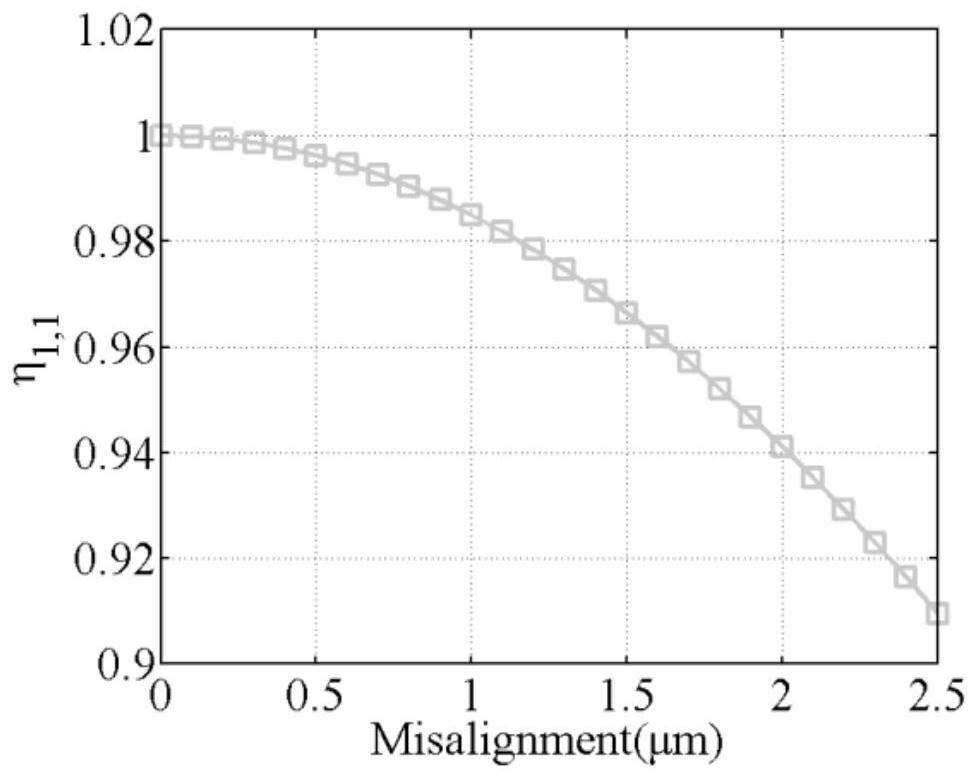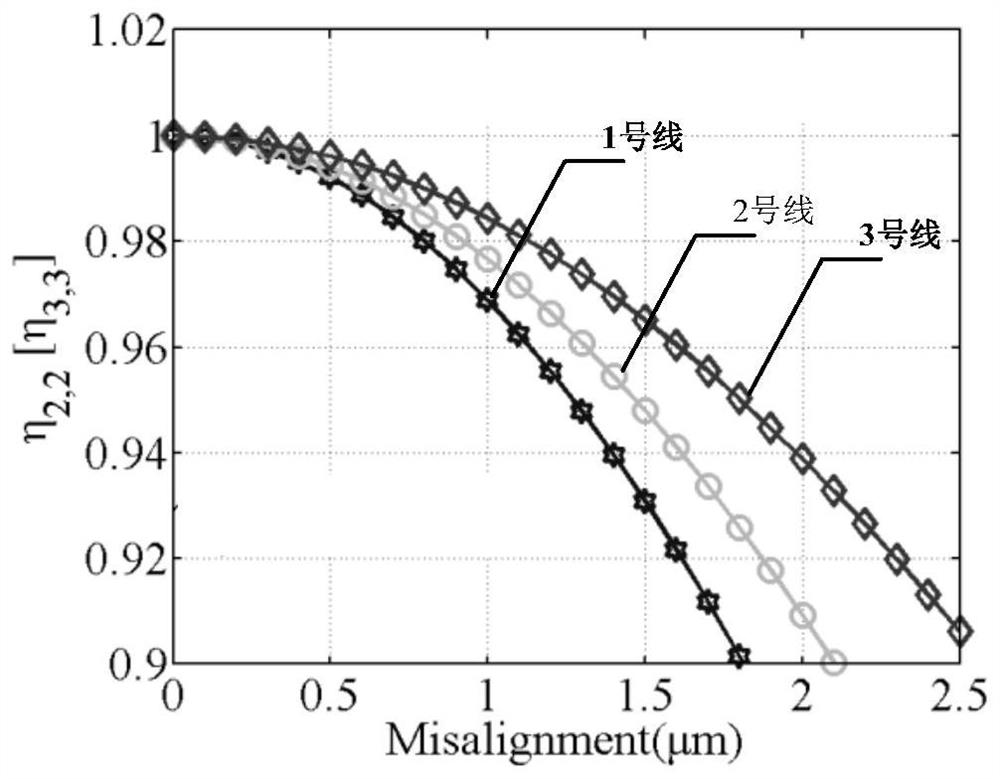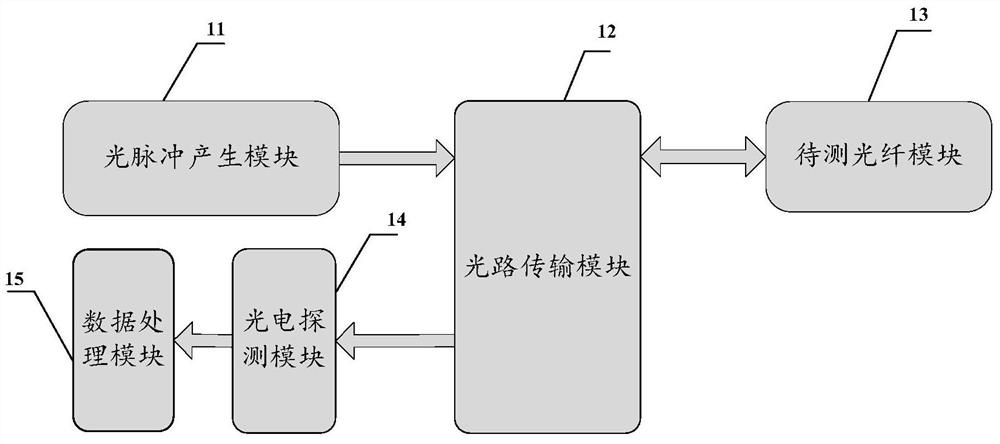A Fault Detection Method for Few-Mode Optical Fibers Based on Higher-Order Mode Back Rayleigh Scattering
A Rayleigh scattering and few-mode fiber technology, which is applied in electrical components, electromagnetic wave transmission systems, transmission systems, etc., can solve the problems that affect the accuracy of few-mode fiber fault detection, the low sensitivity of fundamental mode fault detection, and the inability to realize detection, etc.
- Summary
- Abstract
- Description
- Claims
- Application Information
AI Technical Summary
Problems solved by technology
Method used
Image
Examples
Embodiment
[0040] Example: such as image 3 As shown, the method proposed in the present invention is verified experimentally using a few-mode fiber fault detection system. Fault detection on few-mode fiber links is achieved through single-ended operation.
[0041] In this embodiment, various parameters of the optical pulse generation module 11 are set to generate suitable optical pulses. In this embodiment, the following parameters are used to detect the fault event of the fusion splice point of the six-mode step optical fiber. Then the peak power is 40mv, the pulse width is 300ns, and the repetition frequency is the optical pulse signal of 4kHz. Special note: The pulse width will affect the size of the spatial resolution, the wider the pulse width, the greater the spatial resolution, and the fault location accuracy will be reduced.
[0042] In this embodiment, the optical path transmission module 12 is mainly composed of a mode converter 121, a mode demultiplexer 123, and a few-mode ...
PUM
 Login to View More
Login to View More Abstract
Description
Claims
Application Information
 Login to View More
Login to View More - R&D
- Intellectual Property
- Life Sciences
- Materials
- Tech Scout
- Unparalleled Data Quality
- Higher Quality Content
- 60% Fewer Hallucinations
Browse by: Latest US Patents, China's latest patents, Technical Efficacy Thesaurus, Application Domain, Technology Topic, Popular Technical Reports.
© 2025 PatSnap. All rights reserved.Legal|Privacy policy|Modern Slavery Act Transparency Statement|Sitemap|About US| Contact US: help@patsnap.com



